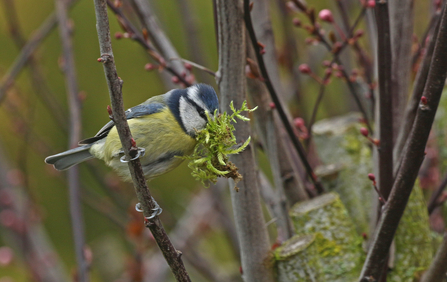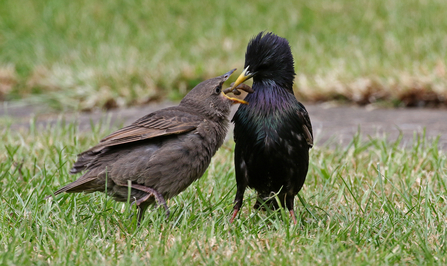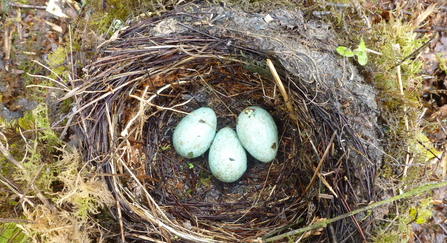
Blue tit with nesting material by Wendy Carter
There are many shapes and sizes of eggs in the natural world but the ones we're most familiar with are, of course, those laid by birds. For the past month or two birds have been pairing up, mating and building nests. Breeding takes its toll on parents and females need to eat the right foods in order to reach optimum breeding condition - a clutch of blue tit eggs in your garden's bird box, for example, contains more calcium than the mother's entire skeleton!



